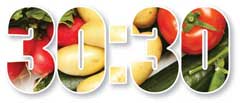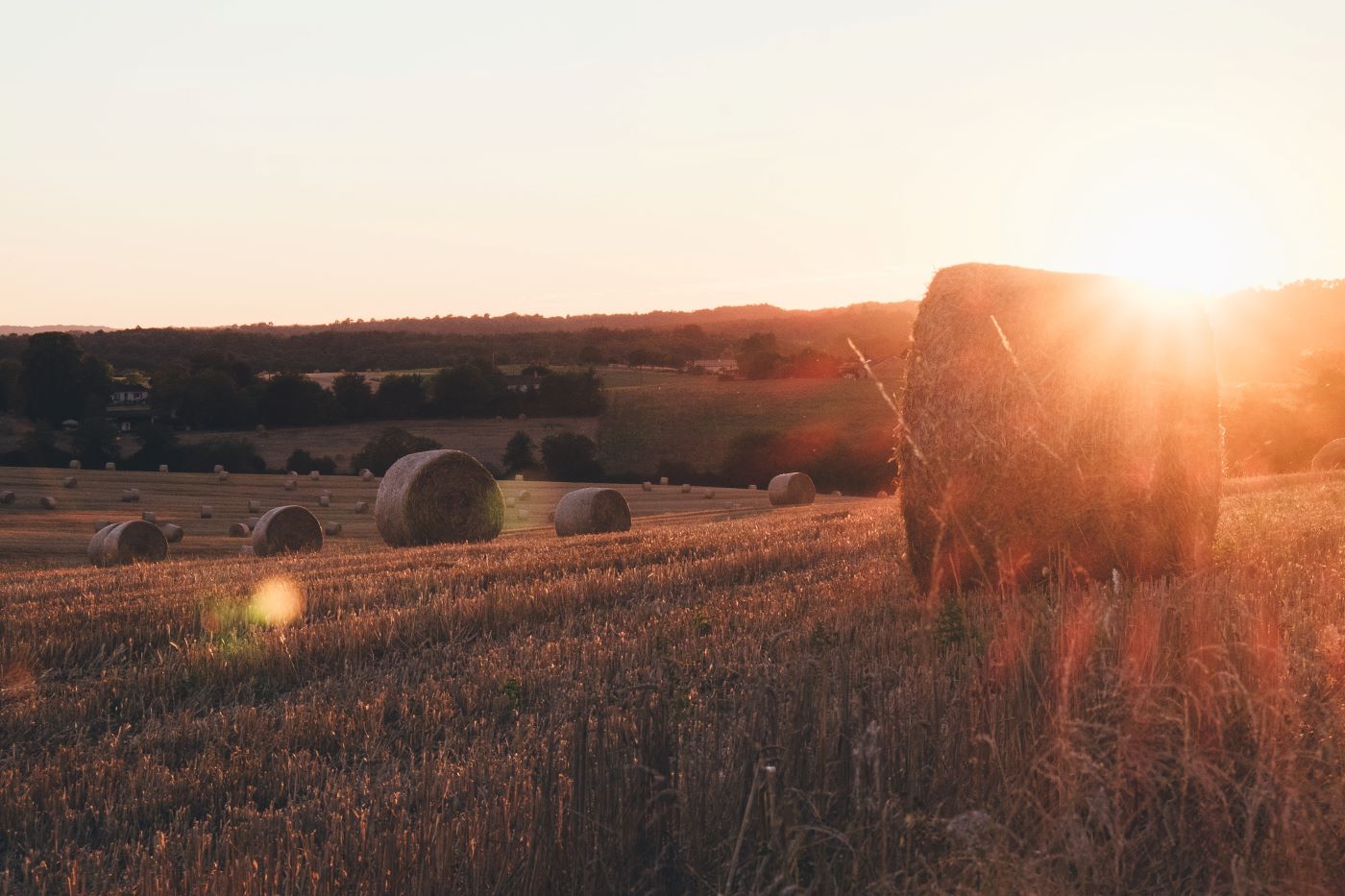Eating local food means finding the best places to buy it...and we can help.
How and where to find and buy local food
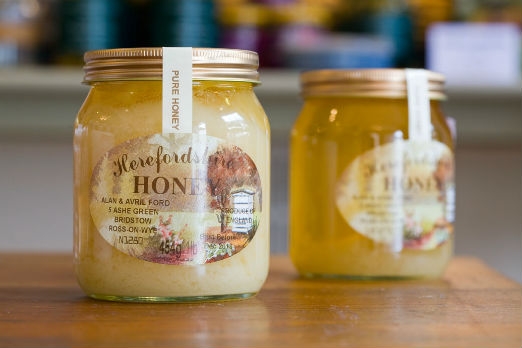 Photo: © Terry Rook
Photo: © Terry Rook
If you usually shop only at supermarkets, it could mean making gradual changes to where and how you shop as, with a few worthy exceptions, supermarkets stock low levels of local food. Shopping around can take a little more time but can be really rewarding, save you money and can be more convenient than the weekly big shop.
Here are 10 suggestions of where to find the best local food.
1. Check the internet for local outlets
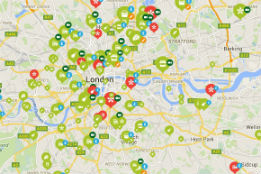 If you don’t know outlets in your area, the best general website we’ve found so far is Big Barn. It has also been maintained for many years. The site is map based with a postcode or place name search function which brings up a wide range of local food outlets: farm shops, farmers markets, delicatessens, independent shops such as butchers, and community supported farms.
If you don’t know outlets in your area, the best general website we’ve found so far is Big Barn. It has also been maintained for many years. The site is map based with a postcode or place name search function which brings up a wide range of local food outlets: farm shops, farmers markets, delicatessens, independent shops such as butchers, and community supported farms.
2. Find a farmers market near you and try it out
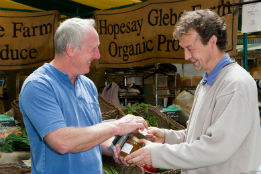 From the first recognised farmers (or producers) market in Bath in 1997, there are now hundreds across the country. Farmers markets come in all sizes and frequencies and rules can vary about where produce comes from but, in general, producers (or family members) must sell their own produce on their stall so they are a very good source for local food. Some set a 30-mile limit to define local. A plus is that they are normally in town centres so good for getting there if you don’t use a car, but frequencies tend to vary from monthly, fortnightly to even weekly. They are great for fresh fruit and veg, meats and often preserves – jams, pickles and honey – and bread and cakes. Distinctive local products make them fun to explore and for finding treats. Take along plenty of cash as they don’t usually have credit card facilities.
From the first recognised farmers (or producers) market in Bath in 1997, there are now hundreds across the country. Farmers markets come in all sizes and frequencies and rules can vary about where produce comes from but, in general, producers (or family members) must sell their own produce on their stall so they are a very good source for local food. Some set a 30-mile limit to define local. A plus is that they are normally in town centres so good for getting there if you don’t use a car, but frequencies tend to vary from monthly, fortnightly to even weekly. They are great for fresh fruit and veg, meats and often preserves – jams, pickles and honey – and bread and cakes. Distinctive local products make them fun to explore and for finding treats. Take along plenty of cash as they don’t usually have credit card facilities.
Local Farmers Markets is a good dedicated site listing around 450 farmers markets across the UK with contacts, dates they run and number of stalls selling food from the local area.
3. Visit a farm shop
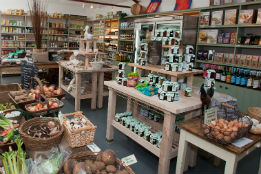 There are around 4,000 farm shops across the UK, meaning if you live in a town or village there should be one within a few miles of where you live. Farm shops usually have to sell a high percentage of their own produce, though many also buy in from elsewhere to extend their range or season. Some of these goods may come from further afield, including abroad, but much is likely to be local: farm shops we interviewed stocked on average around 70% local food – sourced from within 30 miles. A big plus is they’re usually open normal trading hours but often you’ll need to drive to get there so it’s not ideal for everybody. There isn’t a one-stop site dedicated to farm shops but you should be able to find local farm shops through Big Barn or using a search engine.
There are around 4,000 farm shops across the UK, meaning if you live in a town or village there should be one within a few miles of where you live. Farm shops usually have to sell a high percentage of their own produce, though many also buy in from elsewhere to extend their range or season. Some of these goods may come from further afield, including abroad, but much is likely to be local: farm shops we interviewed stocked on average around 70% local food – sourced from within 30 miles. A big plus is they’re usually open normal trading hours but often you’ll need to drive to get there so it’s not ideal for everybody. There isn’t a one-stop site dedicated to farm shops but you should be able to find local farm shops through Big Barn or using a search engine.
4. Use good independent food shops
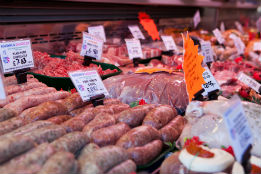 Traditional ‘specialist’ food shops – butchers, bakers, greengrocers and fishmongers – and delis can be excellent places to find local food. They can be missed out because they may not label their local produce. Sourcing locally is part of a traditional way they work to ensure produce is of high quality and can be trusted. More shops seem to be using local labels now, but do get to know your local independent stores, speak to the staff to find out what is local and show your interest in local food.
Traditional ‘specialist’ food shops – butchers, bakers, greengrocers and fishmongers – and delis can be excellent places to find local food. They can be missed out because they may not label their local produce. Sourcing locally is part of a traditional way they work to ensure produce is of high quality and can be trusted. More shops seem to be using local labels now, but do get to know your local independent stores, speak to the staff to find out what is local and show your interest in local food.
CPRE interviewed many such stores as part of its local food webs research and found that, on average, these traditional shops, including delis, stocked from around 40% to 70% of local food, with butchers scoring highest. Again, try the Big Barn website for some leads but it’s worth visiting your local butcher or greengrocer or deli and asking what’s local.
5. Sign up to a box scheme
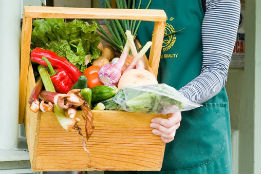 Box schemes score highly for providing fresh, seasonal produce, especially fruit and vegetables, and for supporting smaller producers. Schemes we interviewed in our food webs research were usually supplying very high percentages of local food. They can be a convenient alternative if getting to the shops is difficult and often they can supply meat, dairy, eggs and drinks, as well as the traditional fruit and veg.
Box schemes score highly for providing fresh, seasonal produce, especially fruit and vegetables, and for supporting smaller producers. Schemes we interviewed in our food webs research were usually supplying very high percentages of local food. They can be a convenient alternative if getting to the shops is difficult and often they can supply meat, dairy, eggs and drinks, as well as the traditional fruit and veg.
With vegetables boxes, it can take some experience to make good use of the range of seasonal veg delivered. If you’re not a confident cook, think about starting with a less frequent delivery to get used to it. You may soon find that you are eating and enjoying much more veg and varieties than before.
The Soil Association have a helpful map with postcode/place name search for your most local organic box scheme.
6. Try traditional markets
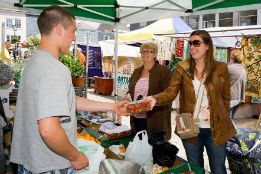 It’s well worth checking out your local traditional markets – street markets and covered markets. They are generally under-recognised as sellers of local food. We researched traditional market stalls in three towns and found many sold local food and some in large amounts. In many ways, market stalls are not much different from traditional specialists like butchers, bakers, greengrocers and fishmongers and with similar produce. Labelling may be an issue so be prepared to ask what’s local and in season.
It’s well worth checking out your local traditional markets – street markets and covered markets. They are generally under-recognised as sellers of local food. We researched traditional market stalls in three towns and found many sold local food and some in large amounts. In many ways, market stalls are not much different from traditional specialists like butchers, bakers, greengrocers and fishmongers and with similar produce. Labelling may be an issue so be prepared to ask what’s local and in season.
There are over 1,000 markets in the country with opening times varying from one day weekly to most of the week. If you haven’t been for some time, do go and explore and let the stallholders know you’re interested in local food. Prices should be competitive.
7. Find a Pick Your Own (PYO) farm or stop at local farms selling at the gate
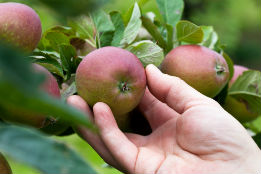 We’re close to the end of the season now but pick your own is a great way to buy quantities of particularly local fruit, which is as fresh as it can be; it can be a treat too for the kids, especially if strawberries are involved. They also get to learn where the fruit comes from.
We’re close to the end of the season now but pick your own is a great way to buy quantities of particularly local fruit, which is as fresh as it can be; it can be a treat too for the kids, especially if strawberries are involved. They also get to learn where the fruit comes from.
Big Barn has some links to PYO farms but also try Pick Your Own Farms, which has a decent listing by county or just put pick your own and your city or town into a website search engine and it should come up with plenty of suggestions.
Stalls at farm gates can also be a bonus so look out for them if you are out and about in the countryside. Again, they’re a chance to buy super-fresh produce and usually at low or very fair prices.
8. Some you may have missed: new ‘kids on the block’ and some that have a longer heritage
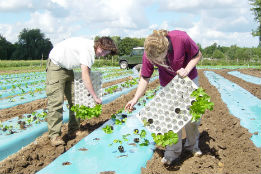 Community Supported Agriculture has grown rapidly over the past decade with new farms starting up across the country. Similar to a box scheme, you can get a regular supply of local freshly picked fruit, veg and sometimes other produce (such as meat or honey); most will be organic. The difference is each CSA or community supported farm recruits members who join and commit to taking produce for a fixed period, often a year, which gives the farm a secure stable income and a decent return to the farmer. Members are encouraged to volunteer and there’s a strong social and community element with events and opportunities to be involved with the planting and growing, and visiting the farm. It’s a great way to eat really fresh, sustainable local and fairly traded food while being closely connected to its production. CSAs also build a community of members who help the CSA grow and learn more about farming and horticulture. You can find if there is a CSA in your area at the CSA Network site.
Community Supported Agriculture has grown rapidly over the past decade with new farms starting up across the country. Similar to a box scheme, you can get a regular supply of local freshly picked fruit, veg and sometimes other produce (such as meat or honey); most will be organic. The difference is each CSA or community supported farm recruits members who join and commit to taking produce for a fixed period, often a year, which gives the farm a secure stable income and a decent return to the farmer. Members are encouraged to volunteer and there’s a strong social and community element with events and opportunities to be involved with the planting and growing, and visiting the farm. It’s a great way to eat really fresh, sustainable local and fairly traded food while being closely connected to its production. CSAs also build a community of members who help the CSA grow and learn more about farming and horticulture. You can find if there is a CSA in your area at the CSA Network site.
Food Assemblies are definitely the new kids on the block so not yet widespread but worth looking out for or investigating if they are near you – there is a searchable map on The Food Assembly website with around 30 already operating in England. Food Assemblies operate an online ordering service for customers to order local produce that local producers then supply to a fixed venue open one day a week for customers to collect. It means customers can order exactly what they want, can buy high quality locally food including fruit, veg, cheese and meat, and talk to the person who produces it; producers can supply to order with minimal waste, get a fair income and meet their customers. The idea has spread to the UK from the continent where there are more than 750 assemblies already set up.
Country Markets are held weekly in around 300 places across England, Wales and the Channel Isles in various venues including village halls and community centres. If you aren’t familiar with them give them a try. For a long time they were Women’s Institute markets so it’s not surprising that you can find wonderful high quality baked goods and preserves, as well as home-grown veg and fruit, plants and craftwork items. Many also stock meat, fish, dairy and eggs from other local producers. They operate on co-operative principles so any one can become a member for minimal cost and trade producing from their own kitchen or garden. You can easily search your area for your local Country Market on a map by postcode.
9. Go micro – if you’d like a local pint or pinta
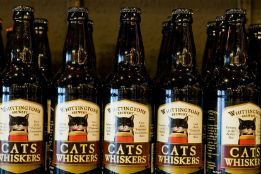 The growth of smaller companies producing beer is an amazing success story – there are now more than 1,000 microbreweries and it’s a really good way to find some distinctive local ales and support your local economy. There’s a good country by county listing on the British Beers website. The Campaign for Real Ale (CAMRA) also run a LocAle scheme which supports real local ales in pubs.
The growth of smaller companies producing beer is an amazing success story – there are now more than 1,000 microbreweries and it’s a really good way to find some distinctive local ales and support your local economy. There’s a good country by county listing on the British Beers website. The Campaign for Real Ale (CAMRA) also run a LocAle scheme which supports real local ales in pubs.
Microdairies could be the next big thing. Dairy farmers are struggling to make a living on what they are paid by the big processing companies but more farmers are now processing and selling their own milk direct. There are 20 or more such microdairies in the country but lots of other small dairies producing cheese, yoghourt and ice cream. A good start to find one is Big Barn’s dedicated milk map.
Support a microdairy and you could be getting top quality milk at fair prices to you and the farmers - and from a nearby farm.
10. Your local supermarket
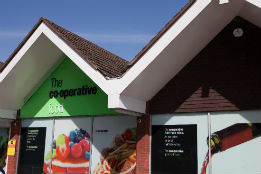 Finally, it’s still worth checking out your local supermarkets. Booths in the north of England, the East of England Co-op, and Budgens and Waitrose nationally have a better track record on local or regional food than most. The big four supermarkets have a mixed and patchy record on local food. Some do define it and stock some but the levels are generally low (around 5% or less of stock), and there is a long standing debate about how well the big chains support suppliers, whether they support smaller local businesses or pay a fair rate. Whichever supermarket you shop in, it’s worth looking out for local or regional labels and, if you can talk to managers or section managers, show your interest in local food. It can only help if you do to encourage them to stock more and label it better.
Finally, it’s still worth checking out your local supermarkets. Booths in the north of England, the East of England Co-op, and Budgens and Waitrose nationally have a better track record on local or regional food than most. The big four supermarkets have a mixed and patchy record on local food. Some do define it and stock some but the levels are generally low (around 5% or less of stock), and there is a long standing debate about how well the big chains support suppliers, whether they support smaller local businesses or pay a fair rate. Whichever supermarket you shop in, it’s worth looking out for local or regional labels and, if you can talk to managers or section managers, show your interest in local food. It can only help if you do to encourage them to stock more and label it better.
Find out more
10 reasons to buy and eat local food
Read more about our work on local food
Get involved
More featured articles
-
We're making some changes2019-08-01Calling all graduates...2019-06-24Women countryside campaigners: the 1920s2019-01-31The landscapes they left behind2018-11-09A deposit return system for England2018-03-28Emma Bridgewater on CPRE's big ideas2017-07-24My England: the photographer’s vision2017-04-19Leicestershire: A Heritage at Risk2017-01-05And that’s a wrap!2016-12-23What next for rural England?2016-12-16Finding inspiration in the Green Belt2016-12-16Protecting our literary landscapes2016-12-07Celebrating 90 years of CPRE2016-12-07Web survey book winners announced2016-10-28Why we should buy locally produced food2016-09-27
